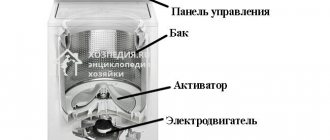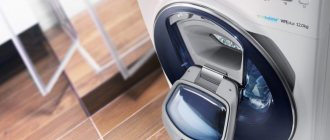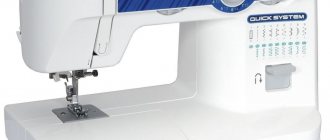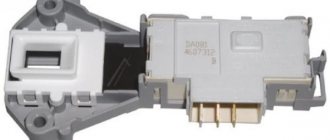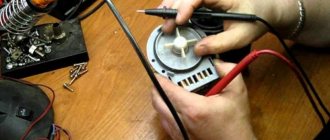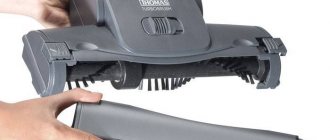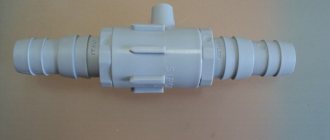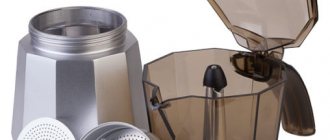Among the many devices created to make our lives easier, there are clothes dryers. Some have already appreciated their advantages and convenience, while others still cannot understand why taking up useful space in the house with a bulky unit. In order for you to form the right opinion, you need to know how a modern clothes dryer works. Having figured out the nuances, you will be able to objectively evaluate all the advantageous aspects of the device and understand the negative aspects associated with its use.
How does a dryer work?
Structurally, the drying machine consists of several parts:
- chambers for things - usually in the form of a steel drum, in some models with backlight;
- an electric motor that drives the device and a belt drive connecting the motor to the tank;
- a heat exchanger consisting of two channels through which cold and hot air moves;
- heating element providing the desired flow temperature;
- a fan that picks up air masses and gives them the right direction;
- air intakes - they absorb dust and debris from clothing;
- containers for collecting condensate that forms during the drying process; the container is not provided in all models; exhaust hoods are not equipped with it.
On the outside of the housing of the household appliance there is a control panel with buttons for selecting the operating mode and an electronic display.
Important! Sometimes the design of a clothes dryer provides only direct rotation of the drum. But some models have a reverse function, which provides faster and better processing.
Drying types
Regardless of the type of design, dryers offer three main types of drying.
By time
The simplest type, according to which a person simply sets the drying time, after which the work cycle ends. The downside is that it is not always possible to correctly determine the drying time of things, so they may remain damp or dry out.
By degree of humidity
In this case, a person chooses the degree of residual moisture of things. The machine has built-in sensors that detect the air humidity inside the drum or cabinet and stop drying when the desired degree is reached.
This type involves two ways to control humidity. The first and most popular way is to select one of three modes, which look like this:
- optimal humidity for ironing clothes (things remain under-dried);
- drying in a “cupboard” (things dry almost completely);
- completely dry.
Modern models may have a second method of humidity control, which is carried out in this order:
- Current is passed through things.
- As long as things are wet, the circuit is closed.
- When things dry, the circuit opens and drying stops.
By type of clothing
In this case, a person chooses not the type of fabric, but the type of clothing that needs to be dried. For example, it could be jeans, shirts or outerwear. It is worth noting that some modern models also allow you to choose the type of fabric. They are more expensive, but more practical, because you can dry even the most delicate things in them without any fear, simply by choosing the right mode.
Some models are equipped with a special shelf-basket in which you can dry shoes, soft toys, etc. in a static position. Super- or extra-dryers are also available, which require high temperatures for blowing thick and multi-layered fabrics.
Types of dryer
Any dryer works on the same principle: they process things with a stream of hot air, and thanks to this, moisture quickly evaporates from the fabric. But the implementation of this scheme varies depending on the model.
Drum dryers
Videos about the operation of clothes dryers show that in appearance and design, units of this type are similar to washing machines. Things are in a rotating drum, but they are not affected by water, but by hot air, which ensures the evaporation of moisture. Within a minute, the internal tank is capable of making more than a hundred revolutions, drying is fast and high-quality. The advantages of drum models include their compact size.
In the fast drying mode, it takes about 20 minutes to process items in the drum
Drying cabinets
In apartments and private houses, such units are rare - they are too large in size and represent a spacious and tall metal chamber. Drying things in a special cabinet occurs slowly. But the device is ideal for processing outerwear, shoes and fabrics for which mechanical stress is undesirable.
The drying cabinet does not wrinkle things and provides the most gentle treatment
Condensation
Dryers with a condensing operating principle are the most popular. As the name implies, the moisture evaporated from clothing settles in tiny particles inside a special reservoir. After completing the operating cycle, the water from the tray is simply drained and the filter is washed.
The condenser dryer can be placed anywhere in the house
Exhaust
These types of dryers are less popular. The moisture in them, along with the air flow, is removed into ventilation or into the environment - for example, out a window. Exhaust models are cheaper, but their installation is associated with certain difficulties; when positioning the unit, you need to think about where the massive hose will go.
Exhaust dryers take up more space and rarely fit into the interior
Washing machines with drying function
Conventionally, drying units also include washing machines with a built-in moisture evaporation mode. When this function is activated, after rinsing and spinning, the device heats the air using a heating element and supplies it to the empty drum. The main advantage of the units is obvious - there is no need to install two separate devices for washing and drying in the apartment.
The disadvantages of a washing machine with a built-in dryer are low power and high energy consumption
Operating principle of the drying cabinet
The interior space of the drying cabinet is organized in the same way as in a regular wardrobe. That is, things that require drying, like in any other closet, are hung on hangers, hangers and laid out on shelves.
Then the desired program is selected and the appliance is turned on. The process of drying things begins in the closet. The air inside the chamber heats up and begins to circulate. When blown with warm air, the things in the closet dry out, and the moisture comes out along with the exhaust air. It’s good if it is possible to remove humid air outside the room. It is worse if the air from the closet goes directly into the room (with this option the room must be ventilated).
Washing machine functions
Regardless of the principle of operation, clothes dryers usually support several operating modes:
- easy drying “under the iron”, in this case most of the water evaporates from the items, but they remain slightly damp, which is convenient for subsequent ironing;
- processing “in the closet” - after removal from the unit, clothes remain completely dry, they can be immediately put on or folded and stored;
- extra drying - takes the least time, but is usually used only for multi-layer fabrics that are resistant to high temperatures;
- delicate drying - processing of things occurs more slowly, but even the thinnest and most sensitive clothes can be loaded into the machine;
- “anti-crease” mode, after completion of the main operating cycle, the drum continues rhythmic rotation for several seconds until the door opens, the fabrics ultimately require almost no ironing;
- steam smoothing, when processing easily wrinkled laundry, the drying unit first sprays water inside the chamber, which then turns into steam and helps smooth out folds and creases on the clothes;
- ventilation, you can even load dry things into the machine that have been lying in the closet for too long, in which case the device will simply refresh them and remove dust, wool and unpleasant odors.
The more built-in modes a drying unit supports, the wider its functionality. Modern models process both delicate natural fabrics and jeans, outerwear and thick duvets.
Advantages (pros) of drying machines
Positive traits:
- reduction of drying time;
- there is no need to install mechanical dryers around the house (on the balcony, in the bathroom and other rooms);
- it becomes possible to return things to their original appearance in one cycle of work;
- low wear of structural elements, since the clothes drying machine does not operate at high engine speeds (develops a speed of 100 rpm);
- different modes provide the ability to preserve the properties and structure of materials;
- does not spoil the interior: the devices resemble a closet or a washing machine.
How does a clothes dryer work?
There are two types of drying machines based on their design features. Their operating principles are different.
Drying cabinet
From the inside, the device looks like a regular wardrobe; it has shelves or hangers for clothes. When put into operation, a powerful heating element mounted in the floor or ceiling heats the air, and the fan distributes it evenly inside the chamber, creating a directed flow for drying things. At the end of the cycle, the moisture comes out through the ventilation hose or directly through the cabinet doors.
The drying cabinet must be ventilated after each use.
Drum type machines
Such devices also heat the air using a heating element, after which the fan directs it into a rotating drum. Passing through the fabric, the hot stream picks up moisture and falls to the heat exchanger, where it releases condensate and cools, and then returns to the heating element. In exhaust models, the air is immediately removed to the outside. In both cases, high-quality, uniform drying is ensured by rotating the drum.
The air circulating in drum machines warms up to 70 °C depending on the mode
Type of drying devices
Proper care of your clothes involves not only ensuring they are washed effectively, but also dried properly. This can be achieved through maximum extraction, steam treatment or hot air flows. Modern electric dryers allow you to use all these methods, sometimes even in combination.
There are three types of dryers:
- automatic machine with drying;
- drum dryer;
- drying cabinet (may have one chamber or several).
All three types of devices differ in design and principle of operation.
A tumble dryer is chosen by most consumers. This will be discussed further.
How to use a clothes dryer
Since household appliances differ in design, be sure to read the documents for a specific model before using it for the first time. But the general operating instructions for the dryer will look like this:
- laundry is loaded into the unit, damp, but not excessively wet, but slightly wrung out after washing;
- close the camera of the device and select a mode in accordance with the desired degree of drying and type of fabric;
- press the start button and wait until the machine completes the cycle;
- The laundry is removed from the chamber and sent to the closet or for ironing, depending on the selected degree of humidity.
After each use of the dryer, it is recommended to carry out basic maintenance of the unit. First of all, it is necessary to immediately remove debris from the fluff filters, which collect dust, pet hair, hairs and small threads. These elements become clogged very quickly, which immediately affects the quality of drying.
After the drying cycle, the unit must be left open for at least half an hour.
If the machine operates on the condensation principle, you must also remove the special tray and drain the water from it, even if it is not yet completely filled. The empty container is rinsed under the tap and placed in place.
Advice! If you need to process a large batch of laundry, it is better to put a new batch of clothes in the dryer after an hour break. This will extend the life of the unit.
Types of drum dryers
As noted earlier, drum dryers, in turn, are divided into several main types, each of which can be found below.
Condensation
Such machines are in greatest demand because they do not require special installation conditions. This is due to the fact that they are equipped with a special container where moisture accumulates after drying. In order for the machine to work properly, this container must be periodically cleaned of water. It is best to do this after each drying cycle.
After loading the tank, selecting the drying program and pressing the “Start” button on the control panel, the drying process starts according to this principle:
- The air in the chamber heats up, and the drum rotates in parallel and mixes the laundry.
- Air heated to the specified temperature blows on the laundry, under the pressure of which moisture leaves it.
- The moist air passes through a heat exchanger where it is cooled and dehydrated.
- The resulting water is accumulated in a special reservoir, and the cooled air is again heated by a thermoelectric heater and blows on the laundry again.
You can clearly see the operating principle of such a dryer in the diagram:
Condensing machines may also have a drainage system. In this case, the condensate will drain into the sewer system on its own.
Modern models of such dryers are often equipped with an additional “steam smoothing” program. In this mode, before starting work, water is “sprayed” in the drum, and then the smallest droplets form a small cloud. When exposed to high temperatures, it turns into steam, which helps smooth things out.
Electric dryers with heat pump
The design of such a machine provides for the presence of a cooling circuit. It intensively cools the air flow, thereby promoting faster condensation formation. This reduces the time required to dry laundry.
Ventilation
Such machines are considered obsolete, although they are still found on sale. They have the simplest design compared to other drum-type models. Their difference lies in the fact that they involve exit through a special hose into the ventilation passages. Thus, the installation of such a unit requires additional installation work.
You can clearly see the operating principle of ventilation dryers in the diagram:
Dryer Operation
There is nothing complicated about using clothes drying machines. To know how to use them, read the summary below.
- Loading laundry. Its quantity should not exceed the capacity of the equipment.
Clothes must first be wrung out in a washing machine or by hand.
- Selecting a program depending on the material of the clothing.
Conventionally, programs are also divided into drying by time and by the residual level of moisture of things.
- End of the cycle. The dried laundry, taking into account the degree of its humidity, is sent to the closet or ironed.
- Removing lint from lint filters. The procedure is mandatory and cannot be ignored. Because filters clogged with dust will not be able to pass air properly. As a result, the equipment will not dry things well.
- Getting rid of condensation. After the end of each cycle, you need to remove the condensate container and pour out the collected moisture.
The next drying cycle can only be started after a 40-minute break.
Now you know how dryers work and what they are needed for. And as it turned out, using them, in some cases, is even easier than washing devices.
There is no doubt about the practicality and usefulness of dryers. After all, household appliances that make a housewife’s homework easier simply cannot be useless.
Organize laundry into piles
In order to dry the laundry efficiently and evenly, you must first sort it and then carefully straighten it. When sorting, it is better to focus not on the type and color of the fabric, as when washing, but on the degree of humidity and the intensity of drying.
Before putting things into the machine, you can also distribute them by size. Underwear and bedding or clothing should not be placed in the same pile. To ensure that small items do not get lost among large items, you need to check bedding and clothing, fasten buttons, hooks or zippers on duvet covers, pillowcases, blouses, sweaters and other items. It is better to tie the belts and ties together.
The best manufacturers
The drying machine market belongs to manufacturers from Germany, Italy, and France. There are reliable models made in South Korea and Sweden.
Rating of the best drying machine manufacturers:
- Many housewives recognize models from the German company Bosch as the most careful and economical. Mid-price segment, many functions, beautiful design are the main advantages of the models.
- Indesit is a French manufacturer of equipment that has established itself as one of the best.
- Electrolux - the best price and acceptable quality. Swedish appliances allow you to carefully dry the most delicate items.
- LG is a world famous manufacturer from South Korea.
- Miele - German premium models. The company offers class A energy consumption, compactness, optical interface, and a variety of drying programs.
- Adro is a famous Italian brand specializing in the production of household appliances.
- Zanussi is another Italian manufacturer of household appliances with an optimal set of functions and an affordable price.
Using this collection of tips and ratings, you can choose the best dryer to suit your family's needs and financial capabilities. A one-time investment will subsequently pay off in comfort, time savings and fresh laundry without ironing.
Tips for choosing
As a conclusion, we will try to determine the most important criteria for choosing a household dryer:
- Determine where to install the device. The model you choose must fit into the allocated space;
- The volume of the dryer drum must correspond to the load of the washing machine;
- For a small family, choose compact and low-power models. For a large number of things, you should look for a full-size model with a power reserve;
- The filter must be located in a direct access area;
- Choose a model with only the most necessary modes, without overpaying for unnecessary functionality.
Watch a video of how the dryer works
Main selection criteria
The following parameters influence the choice of dryer:
- Installation location.
- Number of things.
- Electricity consumption.
- Additional functions.
Load Type
By the type of laundry loading, most dryers are front dryers; items are placed in them through the door at the front. There are few freestanding top-loading dryers, mostly washer-dryer models.
Advantages of front loading:
- Large selection of sizes - from standard to extra-narrow.
- The surface can be used as a shelf.
- Can be built under a countertop or installed on a washing machine.
Pros of vertical loading:
- There is no need to bend over to load or unload the dryer if it is installed on the floor.
- Can be installed in a space where there is no room to open the door from the side.
Device dimensions
Before choosing a dryer, decide where it will be installed. If you plan to place it in a column with a washing machine, look at the options from the same manufacturer, as in this case it will be easier to find a mount. If the appliances are from different brands, the dryer should not be larger than the washing machine. Ideally, their widths should match.
If the dryer will be placed separately, you need to measure the space where it will stand. Consider the gaps: 5-10 centimeters from the back panel to the wall and at least 1 cm on the sides.
Most freestanding drying models have a height of 84 to 90 cm, a width of 60 cm or more, but the depth varies:
| Depth (cm) | |
| Standard | 60 or more |
| Narrow | 50-59 |
| Ultra-narrow | 40-49 |
It is rare, but there are compact drying machines up to 50 cm wide, which can load no more than 3 kg of laundry.
Drum volume
All laundry washed in one cycle in the washing machine must be placed in the dryer. In order for it to dry evenly and not wrinkle, there should be enough free space in the drum - approximately 16 liters per 1 kg of laundry. Therefore, when choosing a separate dryer, keep in mind that the drum volume is larger than that of your washing machine. The standard recommendation is 100-110 liters.
Loading weight
The maximum load weight is the weight of dry items, not wet items. This figure usually applies to cotton and linen fabrics, but the weight for synthetics and mixed fabrics will be different. Manufacturers indicate this in the specifications. For example, for cotton the loading weight is 8 kg, and for synthetics it is 3.5 kg.
The maximum load weight of the dryer can be from 3.5 to 11 kg. The optimal figure for a couple is from 4 to 6 kg, for a family of 3-4 people - from 6 to 9 kg. For a family of 5 or more people, it is better to choose a model with a load of 10-11 kg.
Haier washer-dryers can take from 4 to 6 kg of laundry in drying mode and save space:
At the same time, the dimensions of machines with an increased drying volume are small, allowing you to save space
Machines with vertical loading usually have standard dimensions: height - 85 cm, width - 40 cm, depth - 60 cm.
